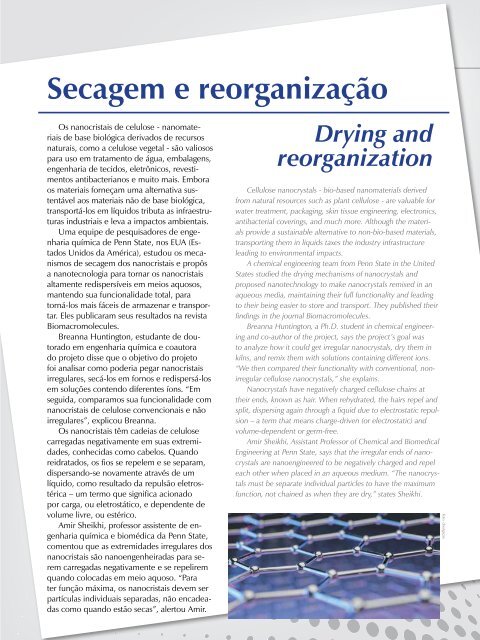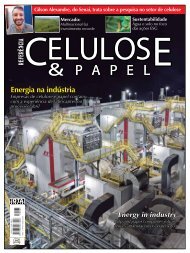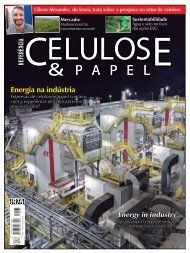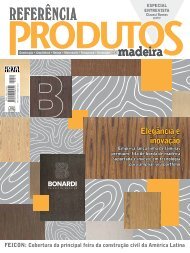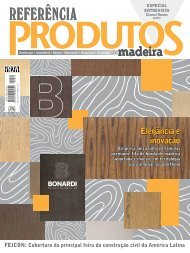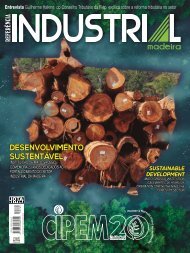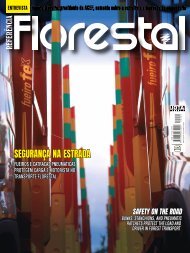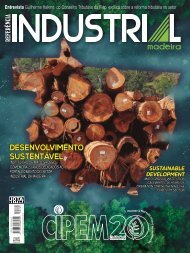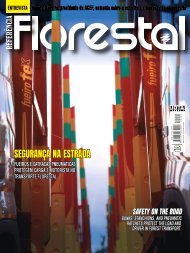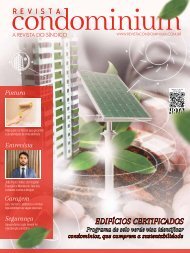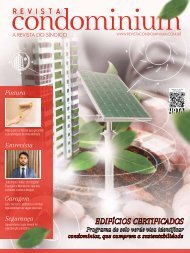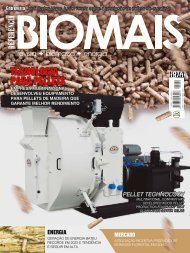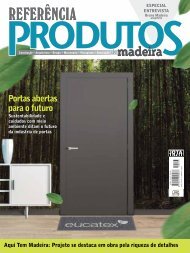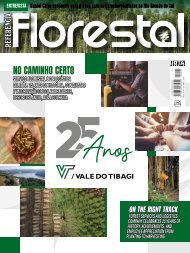You also want an ePaper? Increase the reach of your titles
YUMPU automatically turns print PDFs into web optimized ePapers that Google loves.
Secagem e reorganização<br />
Os nanocristais de celulose - nanomateriais<br />
de base biológica derivados de recursos<br />
naturais, como a celulose vegetal - são valiosos<br />
para uso em tratamento de água, embalagens,<br />
engenharia de tecidos, eletrônicos, revestimentos<br />
antibacterianos e muito mais. Embora<br />
os materiais forneçam uma alternativa sustentável<br />
aos materiais não de base biológica,<br />
transportá-los em líquidos tributa as infraestruturas<br />
industriais e leva a impactos ambientais.<br />
Uma equipe de pesquisadores de engenharia<br />
química de Penn State, nos EUA (Estados<br />
Unidos da América), estudou os mecanismos<br />
de secagem dos nanocristais e propôs<br />
a nanotecnologia para tornar os nanocristais<br />
altamente redispersíveis em meios aquosos,<br />
mantendo sua funcionalidade total, para<br />
torná-los mais fáceis de armazenar e transportar.<br />
Eles publicaram seus resultados na revista<br />
Biomacromolecules.<br />
Breanna Huntington, estudante de doutorado<br />
em engenharia química e coautora<br />
do projeto disse que o objetivo do projeto<br />
foi analisar como poderia pegar nanocristais<br />
irregulares, secá-los em fornos e redispersá-los<br />
em soluções contendo diferentes íons. “Em<br />
seguida, comparamos sua funcionalidade com<br />
nanocristais de celulose convencionais e não<br />
irregulares”, explicou Breanna.<br />
Os nanocristais têm cadeias de celulose<br />
carregadas negativamente em suas extremidades,<br />
conhecidas como cabelos. Quando<br />
reidratados, os fios se repelem e se separam,<br />
dispersando-se novamente através de um<br />
líquido, como resultado da repulsão eletrostérica<br />
– um termo que significa acionado<br />
por carga, ou eletrostático, e dependente de<br />
volume livre, ou estérico.<br />
Amir Sheikhi, professor assistente de engenharia<br />
química e biomédica da Penn State,<br />
comentou que as extremidades irregulares dos<br />
nanocristais são nanoengenheiradas para serem<br />
carregadas negativamente e se repelirem<br />
quando colocadas em meio aquoso. “Para<br />
ter função máxima, os nanocristais devem ser<br />
partículas individuais separadas, não encadeadas<br />
como quando estão secas”, alertou Amir.<br />
Drying and<br />
reorganization<br />
Cellulose nanocrystals - bio-based nanomaterials derived<br />
from natural resources such as plant cellulose - are valuable for<br />
water treatment, packaging, skin tissue engineering, electronics,<br />
antibacterial coverings, and much more. Although the materials<br />
provide a sustainable alternative to non-bio-based materials,<br />
transporting them in liquids taxes the industry infrastructure<br />
leading to environmental impacts.<br />
A chemical engineering team from Penn State in the United<br />
States studied the drying mechanisms of nanocrystals and<br />
proposed nanotechnology to make nanocrystals remixed in an<br />
aqueous media, maintaining their full functionality and leading<br />
to their being easier to store and transport. They published their<br />
findings in the journal Biomacromolecules.<br />
Breanna Huntington, a Ph.D. student in chemical engineering<br />
and co-author of the project, says the project’s goal was<br />
to analyze how it could get irregular nanocrystals, dry them in<br />
kilns, and remix them with solutions containing different ions.<br />
“We then compared their functionality with conventional, nonirregular<br />
cellulose nanocrystals,” she explains.<br />
Nanocrystals have negatively charged cellulose chains at<br />
their ends, known as hair. When rehydrated, the hairs repel and<br />
split, dispersing again through a liquid due to electrostatic repulsion<br />
– a term that means charge-driven (or electrostatic) and<br />
volume-dependent or germ-free.<br />
Amir Sheikhi, Assistant Professor of Chemical and Biomedical<br />
Engineering at Penn State, says that the irregular ends of nanocrystals<br />
are nanoengineered to be negatively charged and repel<br />
each other when placed in an aqueous medium. “The nanocrystals<br />
must be separate individual particles to have the maximum<br />
function, not chained as when they are dry,” states Sheikhi.<br />
Foto: divulgação


